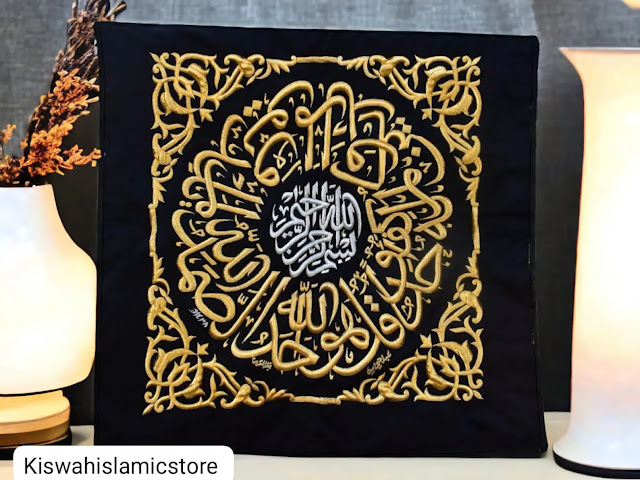How to Explore the History of the Kaaba Kiswah
The Original Kaaba Kiswah is one of the most revered and iconic symbols in Islamic tradition. It is the black cloth that drapes the Kaaba in the Masjid al-Haram in Mecca, Saudi Arabia. The Kiswah holds profound religious, historical, and cultural significance. Over centuries, it has evolved in terms of material, design, and production methods, making it a fascinating subject for exploration.
Origins and Early History of the Kiswah
The tradition of covering the Kaaba dates back to pre-Islamic times. Historical accounts suggest that various Arabian tribes used to cover the Kaaba with different materials, including leather, striped fabrics, and even silk. However, it was Prophet Ismail (AS) who first initiated the practice of dressing the Kaaba in cloth.
During the early Islamic period, Prophet Muhammad (PBUH) continued this tradition. It is reported that he initially covered the Kaaba with a Yemeni cloth, setting the precedent for later generations. As Islam spread, different rulers and dynasties took responsibility for the Kiswah’s production, enhancing its quality and embellishments.
Evolution of the Kiswah During Islamic Dynasties
1. The Rashidun and Umayyad Caliphates
Under the Rashidun Caliphs, the tradition remained unchanged, with simple yet elegant fabric covering the Kaaba. However, the Umayyads introduced the practice of replacing the Kiswah annually, marking the beginning of a structured approach to its maintenance.
2. The Abbasid and Mamluk Influence
The Abbasid Caliphate made significant contributions to the Kiswah by introducing black silk embroidered with gold and silver threads. This opulent design laid the foundation for the present-day Kiswah. Later, the Mamluks of Egypt took responsibility for its production, crafting it in Cairo and transporting it ceremoniously to Mecca.
3. The Ottoman Contributions
During the Ottoman rule, the Kiswah became even more refined. The Ottoman Sultans financed its creation and maintained the tradition of its annual replacement. They also introduced intricate calligraphy, inscribing Quranic verses on the fabric using pure gold and silver threads.
Modern-Day Production of the Kiswah
Manufacturing in Saudi Arabia
Today, the Kiswah is manufactured in Saudi Arabia at the King Abdulaziz Kiswah Factory, established in 1927. This facility employs highly skilled artisans who meticulously craft the Kiswah using over 600 kilograms of pure gold and silver threads woven into black silk.
The Design and Calligraphy
The Kiswah’s design remains consistent with historical traditions. It consists of gold-embroidered Quranic inscriptions, including verses such as Surah Al-Ikhlas and Surah Al-Fatiha. The belt of the Kiswah, known as the Hizam, bears elaborate decorations and is positioned around the upper part of the Kaaba.
Replacement and Installation Process
The Kiswah is replaced annually on the 9th of Dhul-Hijjah, the day before the Hajj pilgrimage climax at Arafat. The old Kiswah is carefully removed and cut into smaller pieces, which are gifted to dignitaries and institutions worldwide as precious souvenirs.
Significance of the Kaaba Kiswah in Islamic Culture
The Kiswah symbolizes the unity of the Muslim Ummah, as it is a reminder of the shared faith of 1.9 billion Muslims worldwide. It also signifies the sanctity of the Kaaba and the importance of preserving Islamic heritage.
Preserving the Legacy of the Kiswah
To explore the history of the Kaaba Kiswah further, one can visit:
The Kiswah Museum in Mecca, which displays previous Kiswahs and offers insights into their production.
The King Abdulaziz Kiswah Factory, where visitors can witness the craftsmanship behind this sacred cloth.
Islamic historical texts, such as those by Ibn Kathir and Al-Tabari, which document the evolution of the Kiswah over centuries.
Conclusion
The Kaaba Kiswah is not just a fabric; it is a historical, spiritual, and artistic masterpiece. Its journey through centuries reflects the dedication of Muslim rulers and artisans in honoring the House of Allah. By exploring its history, we gain a deeper appreciation of Islamic heritage and the traditions that continue to unite Muslims around the world.




Comments
Post a Comment
If you Have any doubt , Please let me know